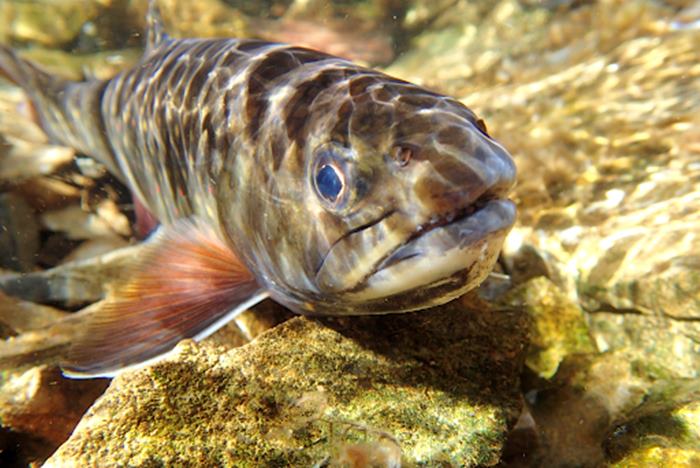Fish species are among the most diverse and numerous animals in the world. There are different species found in different bodies of water, from lakes and rivers to the oceans. They have adapted to almost every ecological niche on the planet. More than 37,000 species of fish have been identified and are ranked second after insects as the most abundant vertebrates. Fish are an important resource for the human economy, and they also play a key role in the functioning of natural ecosystems.
Understanding Fish Species
The habitat fish species can be found in are classified into two categories, either freshwater or marine. This classification improves our understanding of the environment, diet, and behavior of a certain species of fish and their role in the ecosystem.
Freshwater Fish Species
Freshwater species can be found in rivers, lakes, and other areas of standing water with a low concentration of salt. The water also has minimal temperatures ranging from cool to warm. Some of the best-known and most popular fish caught by anglers include:
Bass: Largemouth and Smallmouth bass, which are quite aggressive, competition fish, and are always sporting value.
Salmon: They are first found in freshwater rivers, then these anadromous fish migrate into the ocean and for spawning return to their place of origin.
Trout: Trout species like brook and rainbow trout are common amongst recreational anglers and on a plate as they are located in colder oxygen oxygen-abundant freshwater sources.
Species of Marine Fish
The Tuna: These swift swimmers prefer warm waters and are heavily sought after for both commercial and recreational fishing.
Snapper: Known across the tropics and sub-tropics, snappers are bait fish. They are keenly caught sport fish owing to their delicious taste and fighting skills.
Marlin: With their renowned dorsal fins, distinctively long bodies, and sizable predatory nature, marlins are another species. They are valued by sport fishermen for strength and size.
The Ecological Relevance
They serve very important roles in sustaining the health and balance of water ecosystems. Freshwater of the sea, they assist with the disruption of food webs and productivity of aquatic systems, along with nutrient cycling.
Trophic Roles of Fish Species
Water bodies have many food chains, and fish act as both predator and prey at the same time. Fish help control the population of other smaller organisms by preying on them, which helps prevent overpopulation and resource depletion. Fish serve as prey for bigger predators, including birds, mammals, and other fish, which increases biodiversity of the region.
Nutrient Cycling
Fish play an integral role in the nutrient cycling of water ecosystems by helping transfer essential nutrients. It includes nitrogen and phosphorus. The feeding habits and excretion along with decomposition of fish aid in recycling the nutrients and make them accessible to primary producers like algae and aquatic plants. This aids in the productivity of various aquatic systems while supporting the food web.
Habitat Structuring
Some species of fish play an essential role in maintaining the structure of a certain region. For instance, herbivorous fishes such as parrotfishes scrape the algae and help prevent the excess growth of algae which would otherwise smother coral reefs. This allows for the sustenance of a variety of marine creatures.
Obstacles to Protection
Even though fishes are a vital part of the ecosystem, they are one of the many species that are under threat. If proper care is not taken, the population of fishes will drastically reduce leading to drastic consequences for the ecosystem and the economies dependent on fish.
Overfishing of Fish Species
Arguably, one of the most prominent issues globally is overfishing. Using elements such as rough fishing instruments and juvenile targeting fishing practices further aggravates the issue. Frequent depletion of fish stocks is bound to create an imbalance in the ecosystem and threaten the livelihood of millions earned through fishing.
Habitat Destruction
The world is rife with human pollution and harsh coastal development that leads to the destruction of vital fish habitat areas. Wetlands, Coral Reefs, and Mangroves are crucial spawning sites for young fishes and need to be nurtured instead of destroyed. Reduction in these areas is bound to make it hard to thrive causing a dip in their overall population.
Climate Change
Fish species, their populations, and their habitats are profoundly affected by climate change. Species of fish that are weakly bound to a specific temperature are likely to drift into other places, which, most of the time, come into conflict with other ecosystems.
Conclusion
The balance and wellbeing of bodies of water heavily rely on fish species. They are a vital component for nutrient cycling, food webs, and habitat structuring which leads to enhanced biodiversity and productivity of the environment. Nonetheless, fishes endure major struggles due to overfishing, climate change, and habitat destruction. To sustain fish species, we must incorporate responsible fishing methods while protecting essential regions and mitigating climate change.


